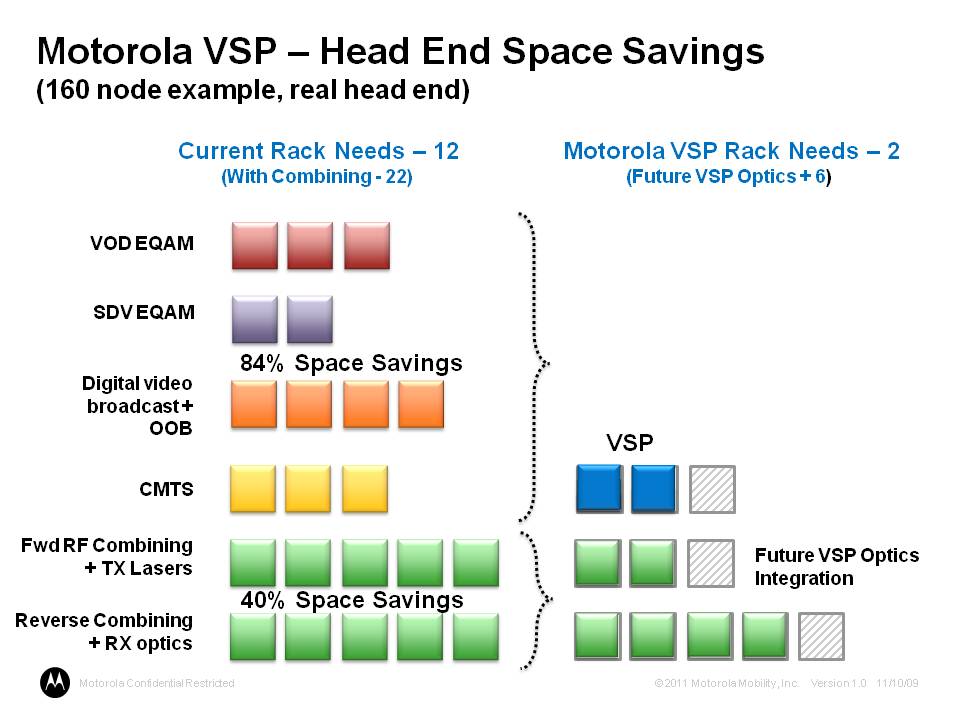Motorola's CCAP Math Figures Dramatic Headend Space Savings

Motorola Mobility’s forthcoming integrated headend platform for cable operators -- designed to comply with CableLabs’ Converged Cable Access Platform specs -- will be able to reduce rack-space requirements of core equipment by 84%, the vendor claims.
Several cable-tech vendors touted new “CCAP ready” products at the SCTE’s Cable-Tec Expo last month in the Sunshine State (see CCAP Recap: The Paths to Convergence and Cable-Tec Expo: Cisco Locks CCAP in 'Whisper Suite').
Also at the show, Motorola provided a glimpse of its own CCAP platform, the Video Services Platform, with private-area showings.
Motorola expects the VSP -- which it vows will be a "full CCAP" device -- to be ready for trials next year, with commercially deployable hardware targeted for 2014.
The company is not publicly disclosing detailed speeds and feeds at this point. But according to Motorola, in a 160-node headend, the VSP will condense into just two data-center racks the equivalent of 12 racks of equipment for cable modem termination systems, and VOD, switched digital video and broadcast edge QAMs (see the diagram provided by the company below).
In addition, the VSP would save 40% on space for the combining network, with future optics integration, according to the company.
CableLabs’s CCAP specification, a synthesis of separate initiatives previously under way at Comcast and Time Warner Cable, defines an integrated headend device that provides capabilities well beyond what MSOs would need in the near future, such as 64 narrowcast QAMs per port. CCAP is supposed to provide operators the capacities and densities they’ll need well into the next decade.
Multichannel Newsletter
The smarter way to stay on top of the multichannel video marketplace. Sign up below.

